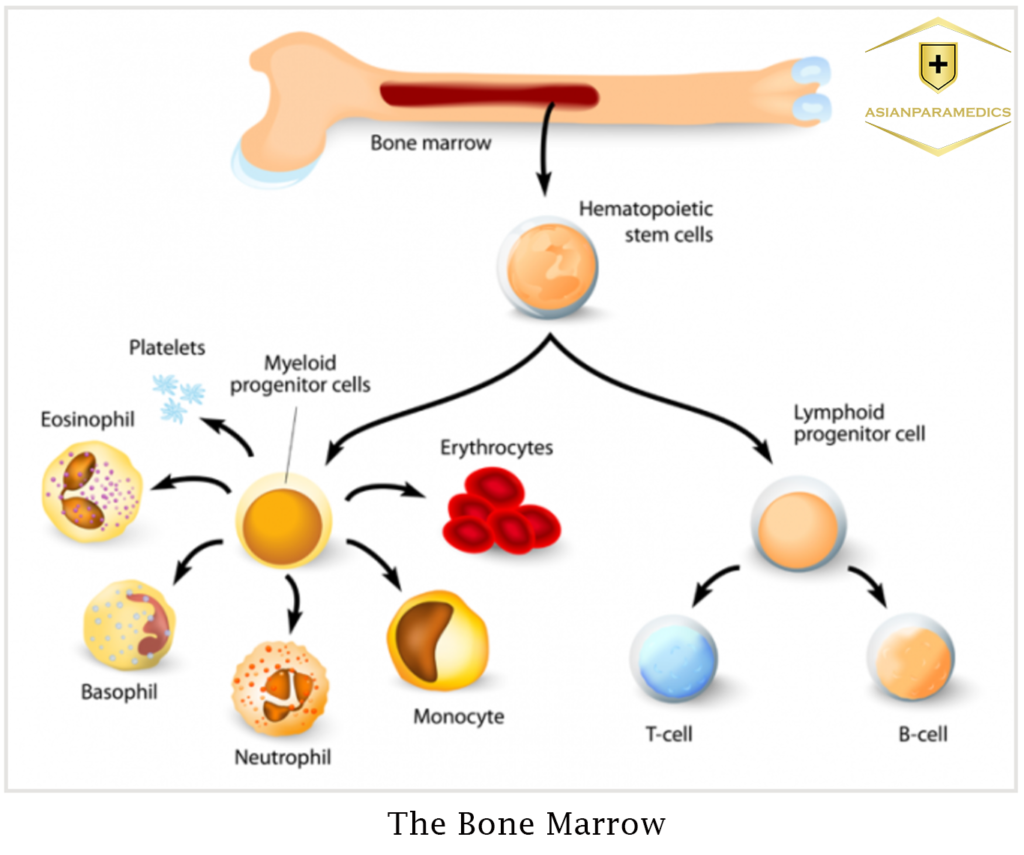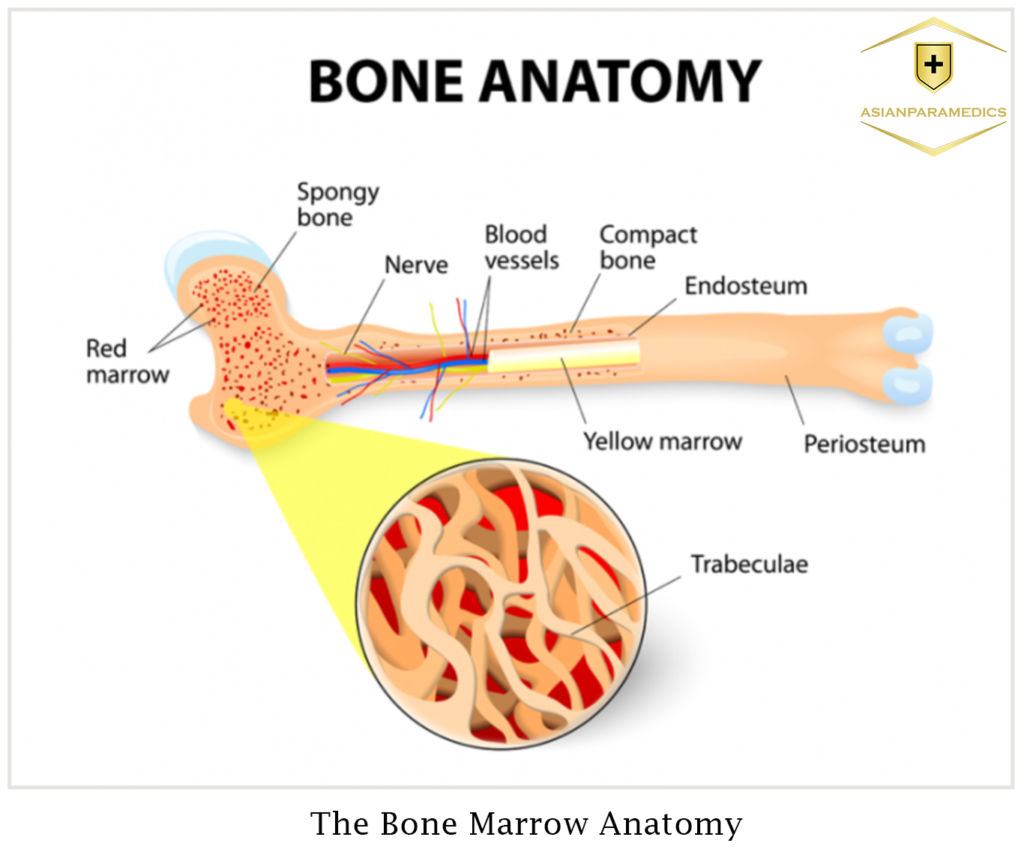BONE MARROW
Bone marrow is the soft pulpy tissue present in trabeculae of spongy bone. It is one of the largest hematopoietic organs of the body. It is composed of two major compartments: The vascular and The endosteal. The vascular compartment is composed of the bone marrow arteries, veins, stromal cells, and hemopoietic stem cell (HSC). The endosteal compartment is primary site of bone remodeling but also contains HSC.

TYPES OF BONE MARROW
1. Red marrow:
is hematopoietic active marrow, composed of blood vessels, some fat cells (lipocytes) and large number of mature, immature and primitive hematopoietic cells. Found in flat bones i.e. hip bone, sternum, skull, ribs, vertebrae, scapula and ends of the longs bones (femur and humerus)
2. Yellow or fatty marrow:
is not actively engaged in the formation of blood. In long bones red marrow is replaced by yellow marrow. Yellow color is due to most of the capillaries become closed in yellow marrow and low O2 oxygen supply lead to low activity.
1. Vascular compartment / vasculature
2. Endosteal compartment
○ Vascular compartment is composed of periosteal artery, Central vein, Nutrient artery, Periosteal capillaries and bone marrow sinuses
○ Stroma is supporting tissue in vascular compartment
○ Stromal cellular components also provide cytokines that regulate hematopoiesis
○ Stroma is composed of main three type of cells macrophages, reticular cells (fibroblasts), and Adipocytes (fat cells)

BONE MARROW STRUCTURE
○ Macrophages have two major function in marrow phagocytosis and secretion of hematopoietic cytokines.
○ Reticular cells located adjacent to sinuses. This cells produce reticular fibers which maintain the three dimensional supporting network of sinuses and abundant source of CXCL12 (SDF-1), which is critical for maintaining an HSC pool in the marrow.
○ Reticular cells can be visualized under microscope when stain it with silver staining.
○ Adipocytes are cells whose cytoplasm is largely replaced with a single fat vacuole.
○ Adipocytes mechanically control the volume of bone marrow in which active hematopoiesis takes place.
○ Also provide steroids and other cytokines that influence hematopoiesis.
○ Bone marrow macrophages is known as osteoclasts and present in both bone marrow compartments.

HEMATOPOITIC CELLS
○ Erythroblast constitute 25-30 % of marrow cells located near to venous sinuses.
○ Erythroblastic Iceland is composed of a macrophage surrounded by different maturation stages erythroblast.
○ Myeloblasts (Granulocytes) located near to trabeculae and arterioles and distinct from venous sinuses.
○ Megakaryocytes is largest one cells of marrow and located adjacent to the vascular sinus.
○ Lymphocytes are normally produced in lymphoid aggregates located near to arterioles.
○ Endosteal compartment is the inner lining of cortical bone and composed of single layer of reticular endothelial cells line, osteoblasts and osteoclasts.
○ Osteoblasts is bone remodeling cell involved in new/calcified bone formation and morphology is resemble to plasma cell.
○ Osteoclasts is macrophages of bone marrow resemble to megakaryocytes in morphology.

FUNCTIONS OF BONE MARROW
Primary function of the bone marrow is to produce red blood cells, white blood cells and platelets. This procedure can be divided into three phases:
1. Blood cells formation
2. Cellular release
3. Bone marrow reserves
1. Blood cells formation
○ All forms of blood cells are derived from a single hematopoietic stem cell called pluripotent hematopoietic stem cell (PHSC)
○ Each cell has to pass through various stages of division and maturation in order to become a mature and functional blood cells
2. Cellular Release
○ In the bone marrow, cells are produced in the extra vascular compartment
○ When mature, they enter the sinusoids through a ‘migration pore” in the endothelial cells of the sinusoid
○ Release of cells from the bone marrow is controlled by a cellular maturity, cellular demand and bone marrow architecture
3. Bone marrow reserves
○ The term bone marrow reserve stands for the ability and the capacity of the bone marrow to meet the hematopoietic requirements of the body in times of stress
○ Normally, the daily loss of red cells, granulocytes and platelets from the circulation is balanced by their production in the bone marrow
○ Whenever there is an increased demand for any of these cells, marrow responds appropriately by delivering more of those cells in the peripheral blood


